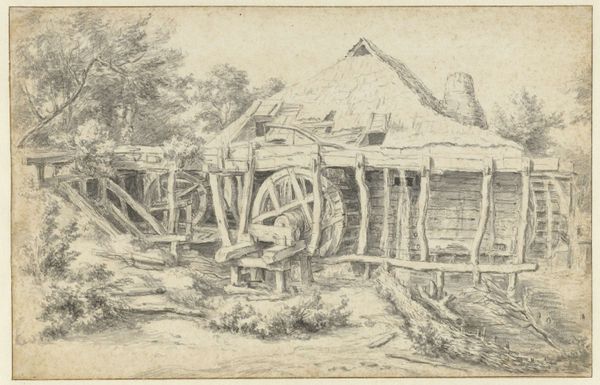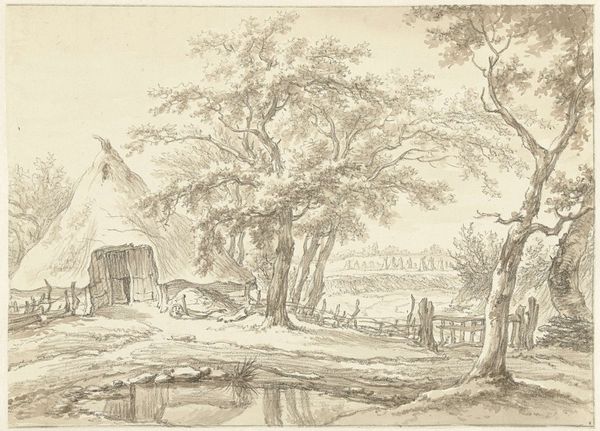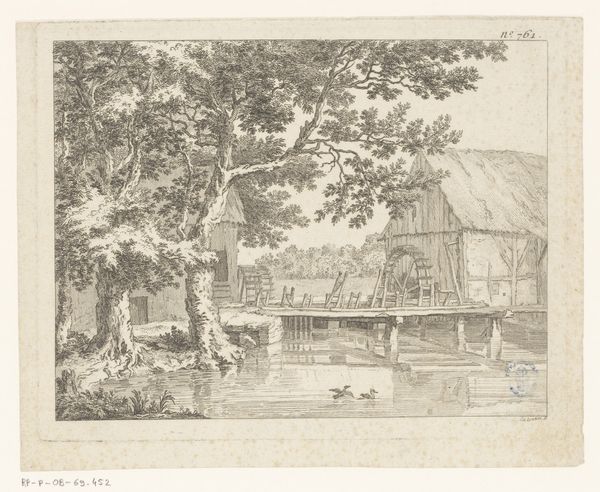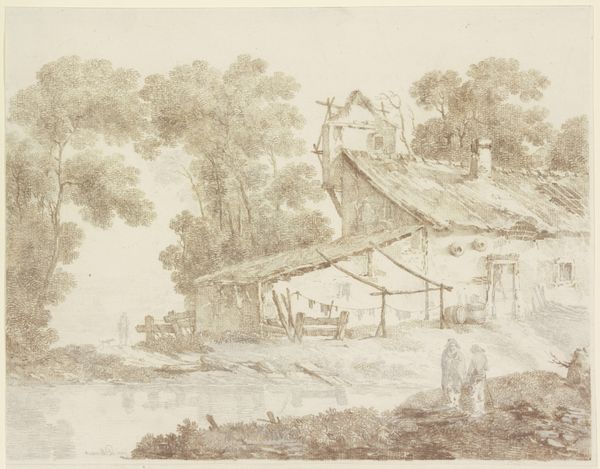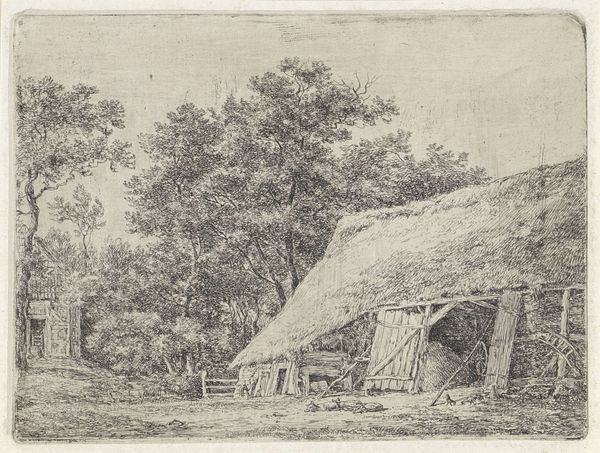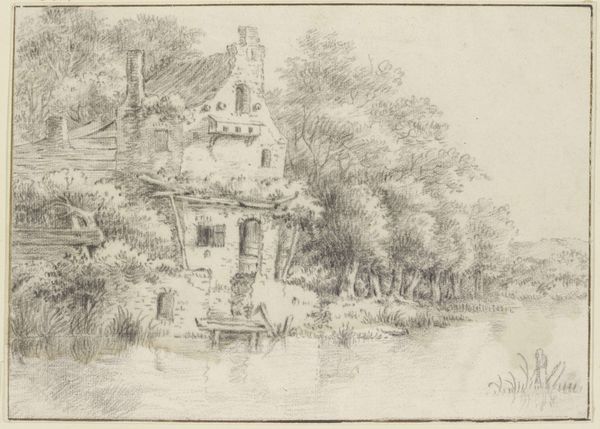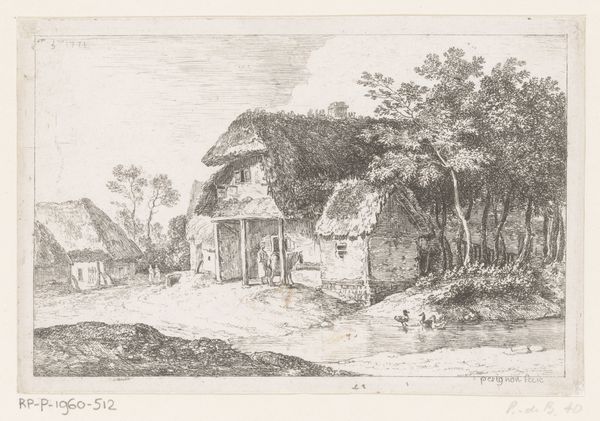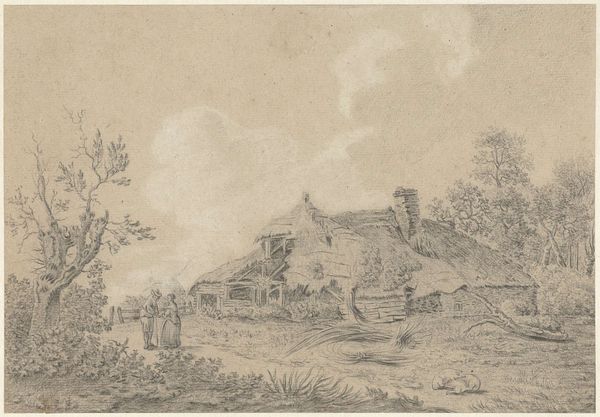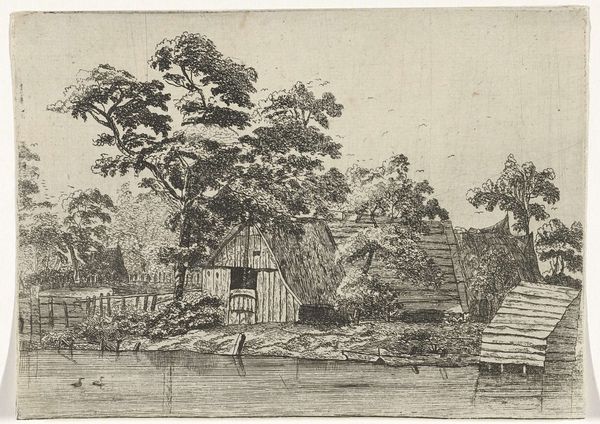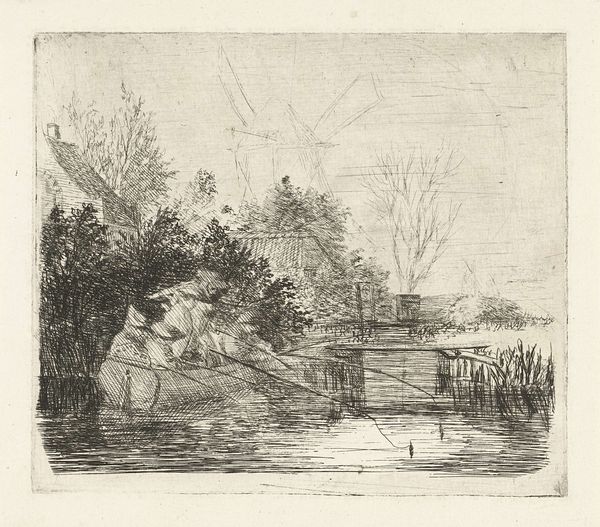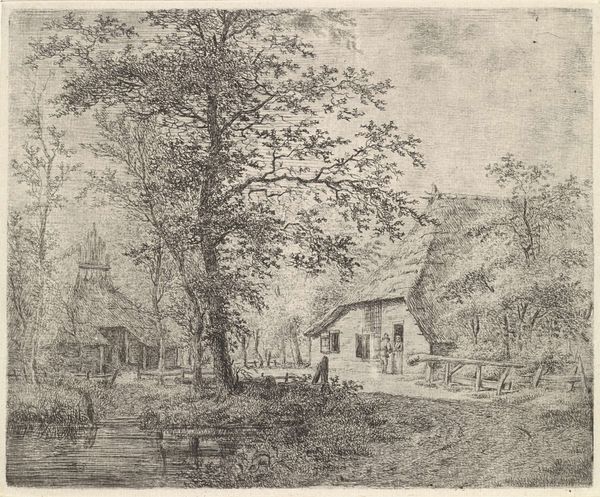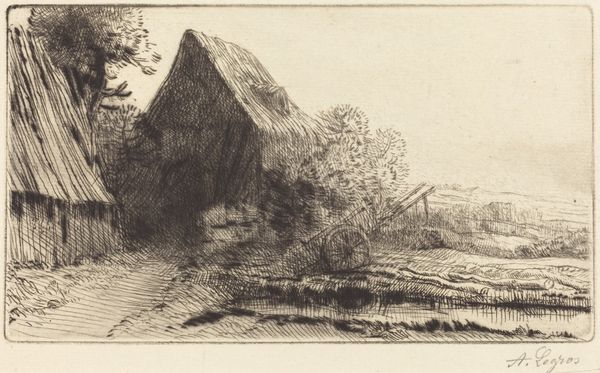
drawing, ink
#
drawing
#
dutch-golden-age
#
landscape
#
ink
Dimensions: height 148 mm, width 194 mm
Copyright: Rijks Museum: Open Domain
Editor: This is "View of Two Watermills Flanking a Sluice," a drawing in ink by Jacob van Ruisdael, likely created between 1660 and 1670. It's incredibly detailed for an ink drawing! What captures my attention are the two watermills and how they flank this central, slightly off-kilter bridge; there is something comforting and very human in the natural and architectural harmony struck here. What do you see in this piece? Curator: What immediately strikes me is how Ruisdael has imbued these structures, the mills themselves, with a potent symbolism beyond their functional purpose. Mills often represented not only industry and prosperity in Dutch Golden Age painting, but also the cyclical nature of life itself, of cause and effect. Does the placement of two mills offer a comparative perspective, almost like opposing forces? Editor: Opposing forces… I hadn’t considered that. It could be that the artist intended the dual structures to serve as a symbolic microcosm. I wonder about the significance of that. Curator: Precisely! Consider the period in which this was created. The Dutch Republic was enjoying a period of significant growth, built on trade and industry. How might this image reflect that cultural narrative of ingenuity and a certain harnessing of natural power? Editor: The landscape seems equally important though, doesn’t it? The natural world almost seems to soften the man-made structures; and the water reflecting back makes you aware of everything being a copy of the other, in potential and in decay... It feels as though Ruisdael wanted to ground human innovation in the cycles of nature itself. Curator: Excellent point. Think of how trees, depicted so prominently, function often as symbols of endurance, stability. By positioning the watermills within a vibrant, living landscape, Ruisdael reminds us that progress and nature are inextricably linked, but is there perhaps a cautionary note too? Editor: A cautionary note? Do you mean how, while prosperous, mills inevitably break down and return to the landscape themselves? Everything runs full circle… that really hits home, given how current our concerns are for climate and humanity's footprint on the earth. It's a very timely caution, even now! Curator: Exactly. Visual symbols often have a trans-historical power, informing our present even centuries later. Thank you for that perceptive analysis!
Comments
No comments
Be the first to comment and join the conversation on the ultimate creative platform.
